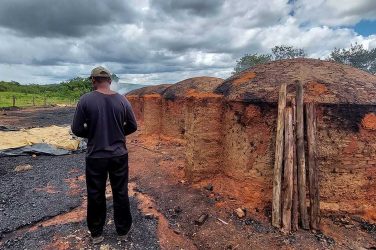Around 250 thousand head of cattle in the state of Mato Grosso do Sul,
Brazil, are receiving booster shots in the vaccination campaign against
hoof-and-mouth disease. The booster shots are being given as a result of the
appearance of cases of rhinotracheitis, a bovine viral respiratory infection,
which generally presents milder lesions than hoof-and-mouth disease.
According to the Secretary of Agricultural Protection, Maçao Tadano, the Brazilian Ministry of Agriculture, Livestock, and Supply decided to work together with Paraguayan sanitary officials in the area of animal health.
Government representatives from the two countries established a Brazil-Paraguay frontier commission for bovine health surveillance.
“The technical personnel will help us with the field work, so that we can gather more information about cases of respiratory infection in the Paraguayan herd,” Tadano informed.
The first meeting of the group is scheduled for next Tuesday, August 31, to discuss the activities to be carried out by the Brazilian and Paraguayan technicians.
In order to continue being the world’s biggest beef exporter Brazil has to maintain the quality of its vast cattle herds. Foot-and-mouth disease is a direct threat to the quality of Brazilian beef and so the government is working to eradicate it once and for all by the year 2005.
At the moment, 15 Brazilian states (out of 27), where 84 percent of the country’s 191 million are located, are considered free of hoof-and-mouth disease with vaccination.
Brazil is a leader in South America in the effort to eliminate the disease and has extended its vigilance to areas beyond its borders.
Over the last two years, Brazil has donated 3 million vaccines to Paraguay and Bolivia as part of an effort to create a security zone in South America.
However, the fact that vaccination is necessary to control the disease requires the cooperation of cattle ranchers.
According to Newton Moraes, at the Department of Inspection at the Ministry of Agriculture, people who have cows must understand that even animals for private use have to be vaccinated because the disease is highly contagious.
He points out that the vaccine is easy to buy and easy to use. “The farmer himself can do it,” he says.
The Brazilian Ministry of Agriculture has laboratories throughout the country to control the disease and oversee the transportation of cattle.
Agência Brasil




